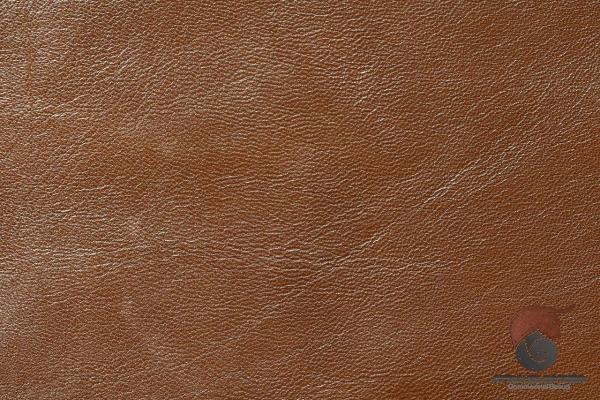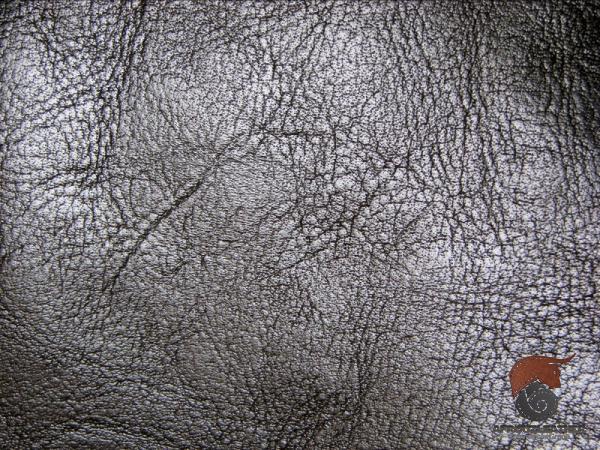Leather is a versatile and highly sought-after material, with a wide range of applications in the fashion, furniture, and automotive industries. However, not all leathers are created equal. Calfskin and lambskin are two popular types of leather that possess distinct characteristics and are ideal for different purposes. In this article, we will compare and contrast calfskin and lambskin, exploring their qualities, uses, and factors to consider when choosing between them. Calfskin: Strength Meets Durability Calfskin is derived from the hide of young cows, typically aged between three and eight months. It is regarded as one of the most durable forms of leather due to its dense, thick fibers. This extra strength makes calfskin resistant to abrasion, tearing, and stretching, making it a preferred choice for products that require longevity, such as footwear and bags. Characteristics: 1. Durability: Calfskin’s sturdy nature is attributed to its tight grain structure, providing excellent resistance against wear and tear. 2. Thickness: Compared to lambskin, calfskin is thicker, making it more suitable for applications where strength is crucial.
leather
 3. Grain Pattern: Calfskin typically features a prominent grain pattern, adding a textured appearance to finished products. 4. Subtle Sheen: Calfskin has a natural luster that enhances its visual appeal, giving it a luxurious feel. Applications: Calfskin’s durability lends itself to a myriad of applications, including: 1. Footwear: Calfskin is commonly used in the production of high-quality shoes, as it offers excellent resistance to scuffing and creasing. 2. Bags and Accessories: Handbags, briefcases, wallets, and belts made from calfskin boast both elegance and durability, allowing them to withstand the rigors of daily use. 3. Upholstery: Due to its robustness, calfskin is suitable for furniture upholstery, providing a luxurious and long-lasting finish. Advantages: 1. Longevity: Calfskin’s durability ensures that products made from it have a longer lifespan, making it a cost-effective choice. 2. Versatility: Its strength makes calfskin adaptable to various uses, from heavy-duty applications to delicate goods. 3. Unique Aesthetic: The distinct grain patterns and subtle sheen of calfskin contribute to a luxurious appearance that is widely appreciated. Disadvantages: 1. Weight: Calfskin’s thickness and density make it heavier than other leathers, which might be a disadvantage in some applications. 2. Initial Stiffness: When newly manufactured, calfskin can feel stiff, requiring a break-in period before becoming more pliable and comfortable. Lambskin: Softness Elevated Lambskin, as the name suggests, is derived from the hide of young sheep.
3. Grain Pattern: Calfskin typically features a prominent grain pattern, adding a textured appearance to finished products. 4. Subtle Sheen: Calfskin has a natural luster that enhances its visual appeal, giving it a luxurious feel. Applications: Calfskin’s durability lends itself to a myriad of applications, including: 1. Footwear: Calfskin is commonly used in the production of high-quality shoes, as it offers excellent resistance to scuffing and creasing. 2. Bags and Accessories: Handbags, briefcases, wallets, and belts made from calfskin boast both elegance and durability, allowing them to withstand the rigors of daily use. 3. Upholstery: Due to its robustness, calfskin is suitable for furniture upholstery, providing a luxurious and long-lasting finish. Advantages: 1. Longevity: Calfskin’s durability ensures that products made from it have a longer lifespan, making it a cost-effective choice. 2. Versatility: Its strength makes calfskin adaptable to various uses, from heavy-duty applications to delicate goods. 3. Unique Aesthetic: The distinct grain patterns and subtle sheen of calfskin contribute to a luxurious appearance that is widely appreciated. Disadvantages: 1. Weight: Calfskin’s thickness and density make it heavier than other leathers, which might be a disadvantage in some applications. 2. Initial Stiffness: When newly manufactured, calfskin can feel stiff, requiring a break-in period before becoming more pliable and comfortable. Lambskin: Softness Elevated Lambskin, as the name suggests, is derived from the hide of young sheep.
Specifications of leather
 It is known for its supple and soft texture, making it a popular choice for luxury fashion and accessories. Lambskin offers a delicate and luxurious feel, providing unparalleled comfort and versatility. Characteristics: 1. Softness: Lambskin’s buttery-soft texture makes it incredibly comfortable to wear and handle. 2. Lightweight: Compared to calfskin, lambskin is lightweight, making it suitable for applications where a lightweight material is desired. 3. Smooth Grain: Lambskin typically has a smoother and more even grain pattern, offering a sleek and polished appearance. 4. Natural Drape: Due to its pliability, lambskin drapes beautifully, adding elegance to garments. Applications: Lambskin’s softness and delicate nature make it a preferred choice in various applications, including: 1. Fashion Garments: Lambskin is commonly used to produce high-end fashion items such as jackets, coats, and skirts, providing a luxurious and comfortable feel. 2. Gloves: The supple nature of lambskin makes it an excellent material for gloves, offering a good grip and flexibility. 3. Small Accessories: Wallets, gloves, and small bags made from lambskin exude sophistication and elegance. Advantages: 1. Softness: Lambskin’s unmatched softness ensures optimum comfort, making it desirable for garments worn close to the skin. 2. Lightweight: Its lightness makes it particularly suitable for fashion items where weight is a factor. 3. Suppleness: The pliable nature of lambskin allows for superior draping, providing a graceful look. 4. Luxury Appeal: Lambskin’s reputation for high quality and luxury adds value to products made from it. Disadvantages: 1. Delicacy: Lambskin is more susceptible to scratching, punctures, and stretching compared to calfskin.
It is known for its supple and soft texture, making it a popular choice for luxury fashion and accessories. Lambskin offers a delicate and luxurious feel, providing unparalleled comfort and versatility. Characteristics: 1. Softness: Lambskin’s buttery-soft texture makes it incredibly comfortable to wear and handle. 2. Lightweight: Compared to calfskin, lambskin is lightweight, making it suitable for applications where a lightweight material is desired. 3. Smooth Grain: Lambskin typically has a smoother and more even grain pattern, offering a sleek and polished appearance. 4. Natural Drape: Due to its pliability, lambskin drapes beautifully, adding elegance to garments. Applications: Lambskin’s softness and delicate nature make it a preferred choice in various applications, including: 1. Fashion Garments: Lambskin is commonly used to produce high-end fashion items such as jackets, coats, and skirts, providing a luxurious and comfortable feel. 2. Gloves: The supple nature of lambskin makes it an excellent material for gloves, offering a good grip and flexibility. 3. Small Accessories: Wallets, gloves, and small bags made from lambskin exude sophistication and elegance. Advantages: 1. Softness: Lambskin’s unmatched softness ensures optimum comfort, making it desirable for garments worn close to the skin. 2. Lightweight: Its lightness makes it particularly suitable for fashion items where weight is a factor. 3. Suppleness: The pliable nature of lambskin allows for superior draping, providing a graceful look. 4. Luxury Appeal: Lambskin’s reputation for high quality and luxury adds value to products made from it. Disadvantages: 1. Delicacy: Lambskin is more susceptible to scratching, punctures, and stretching compared to calfskin.
buy leather
 2. Limited Durability: Its softness comes at the cost of reduced durability, making it less suitable for heavy-duty applications. 3. Higher Maintenance: Lambskin requires more care, such as gentle cleaning and regular moisturizing, to maintain its softness and prevent drying. Factors to Consider: When choosing between calfskin and lambskin, several factors should be taken into account: 1. Intended Use: Consider the application and the level of durability required to ensure that the chosen leather will withstand the specific demands of the product. 2. Aesthetic Appeal: Choose a leather type that aligns with the desired appearance and texture of the final product. 3. Comfort: If comfort is a priority, particularly for items that will be in contact with the skin, the softness and suppleness of lambskin may be preferable. 4. Cost: Calfskin generally carries a higher price tag than lambskin due to its durability and sturdiness. Consider budget constraints when making a decision. Conclusion: Calfskin and lambskin are two distinct types of leather, each offering unique characteristics and advantages. Calfskin’s durability and strength make it ideal for products that require longevity, while lambskin’s softness and luxurious texture make it preferred for comfort-driven applications. Ultimately, the choice between calfskin and lambskin depends on the specific requirements of the product, its intended use, and the desired aesthetic. Both leathers have their place in various industries, catering to the diverse needs and preferences of consumers.
2. Limited Durability: Its softness comes at the cost of reduced durability, making it less suitable for heavy-duty applications. 3. Higher Maintenance: Lambskin requires more care, such as gentle cleaning and regular moisturizing, to maintain its softness and prevent drying. Factors to Consider: When choosing between calfskin and lambskin, several factors should be taken into account: 1. Intended Use: Consider the application and the level of durability required to ensure that the chosen leather will withstand the specific demands of the product. 2. Aesthetic Appeal: Choose a leather type that aligns with the desired appearance and texture of the final product. 3. Comfort: If comfort is a priority, particularly for items that will be in contact with the skin, the softness and suppleness of lambskin may be preferable. 4. Cost: Calfskin generally carries a higher price tag than lambskin due to its durability and sturdiness. Consider budget constraints when making a decision. Conclusion: Calfskin and lambskin are two distinct types of leather, each offering unique characteristics and advantages. Calfskin’s durability and strength make it ideal for products that require longevity, while lambskin’s softness and luxurious texture make it preferred for comfort-driven applications. Ultimately, the choice between calfskin and lambskin depends on the specific requirements of the product, its intended use, and the desired aesthetic. Both leathers have their place in various industries, catering to the diverse needs and preferences of consumers.

Your comment submitted.